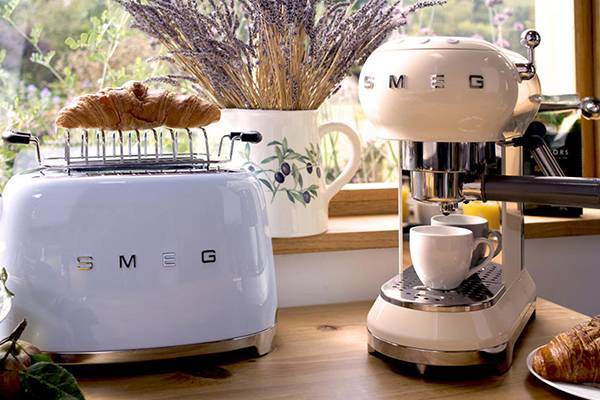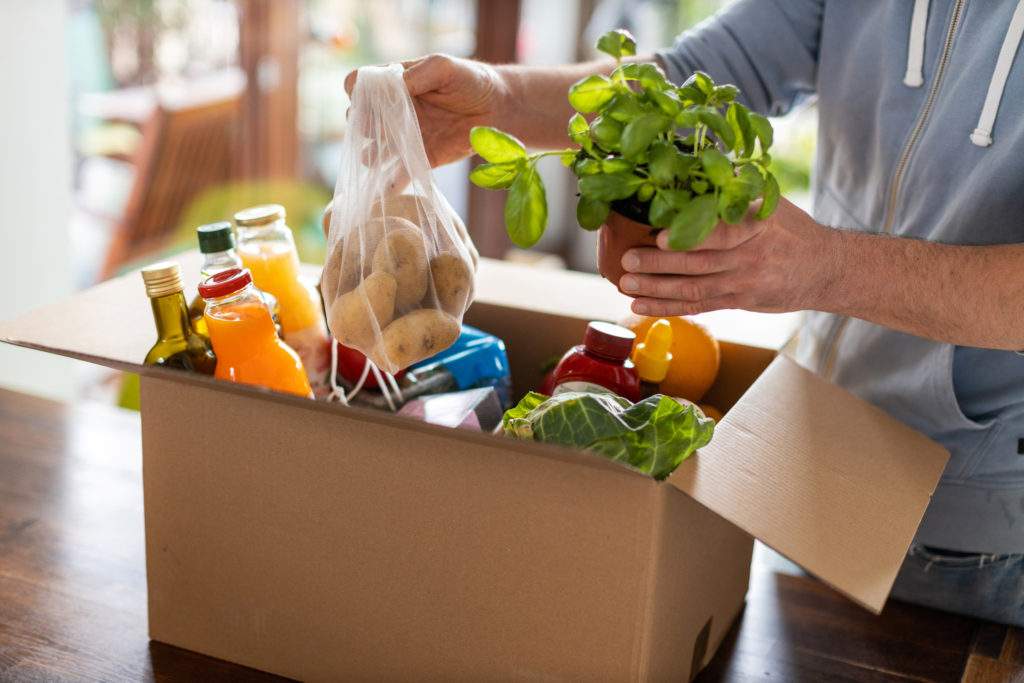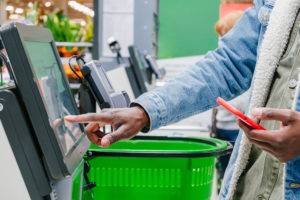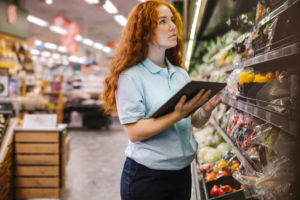
SMEG Customer Case Study
Download this data sheet to explore the features and benefits of Naveo Commerce for Enterprise Grocery.
Customers are becoming increasingly used to a seamless purchasing experience. For the grocery sector, getting this right can be challenging. As Naveo Commerce CRO, Tomas Granö, shares: having a coherent and customer first personalization strategy in place is key.
By Tomas Granö, Naveo Commerce CRO
Did you know 80% of consumers are more likely to make a purchase when brands offer a personalised customer experience? With a multitude of benefits, personalisation is now becoming a key differentiator for the grocery sector. Not only does it improve the customer experience, it also helps retailers to reduce costs and develop loyal customer bases.
The years before Covid-19 had been a particularly lucrative period for grocers, with a £4.9 billion increase over pre-pandemic forecasts. But as profit margins for grocers grew, so did customer expectations.
Fast forward to 2022, consumers have become accustomed to convenient, personalised and frictionless shopping experiences. In this blog, we explore why data and personalisation will be key differentiators for grocers to meet consumer demands moving forward.
Read this blog post to get an idea of how personalization is sweeping eGrocery and scroll to the bottom to view our 3 ideas on how to improve customer loyalty and promote improved profit margin for online grocery sales.
Customers are becoming increasingly used to a seamless purchasing experience in wider retail spaces. However, for the grocery sector, striking the right promise can be challenging. Due to price and location, customers will often shop across multiple stores both in person and online. Some grocers even have to find their place between large weekly shops and smaller convenience trips.
Building brand loyalty is a must for such a competitive market.
Our customer, Co-op UK, decided that they would target this smaller convenience market as priority for Grocery eCommerce during the pandemic. It utilized its network of 800+ stores to offer same-day delivery for top-up items midweek to great effect.
Therefore, supermarkets need to focus on their unique selling point and build a brand loyalty model around it. This can be achieved by harnessing the power of data and by offering personalised shopping experiences.
Tesco recently announced its scheme to introduce a monthly click-n-collect subscription and this shows another example of a grocer pushing the boundaries and offering customer loyalty. Customers who are subscribed to a service will not want to part with money for another.
Successful personalisation starts by establishing a data-driven planning strategy. Data will ensure that the right products are available at the right locations, whether that’s online or in-store. With this data, grocers are then well equipped to deliver personalisation for their customers.
With huge databases that inform them where people shop, which actions they take, the devices they use and where problems may arise. Supermarkets can use this intelligence to craft a personalisation strategy that is centred around trust, and in turn, this will help to drive customer loyalty.
With that said, let’s look at a few models for successful customer loyalty.
The subscription recipe box model, popularised by both Gousto and HelloFresh in the UK, uses personalisation in a highly intelligent way. It offers a customer the chance to specify not only their basic contact information but also much more marketable data such as allergen information, preferences on meat or vegetarian food and preferred cuisines.
With this data, Gousto or HelloFresh might want to send their customers promotional information around a new meal kit or spread-the-word news stories. Even if customers cannot be upsold to, they are likely to report positive customer experience if marketed to in the correct way. There is nothing worse, for a customer, than feeling receiving irrelevant information.

Yet supermarkets have an advantage over current market leaders in meal delivery services, as they already have a sophisticated fulfilment infrastructure in place and far more data to distribute and collect.
This means that the shift to a subscription-based model is much more of a logistical one as opposed to financial. This model also has the potential to be a highly profitable stream of revenue, enabling current customers to benefit from personalised services such as recipe suggestions or product recommendations, all of which are great for boosting loyalty.
Further cost savings can be offered to customers by allowing better forward planning on orders, which helps to optimise the last mile.
Grocers can also use data to personalise the traditional purchasing experience. An example of this could be offering pre-populated baskets that utilise a customer’s shopping history to offer relevant, tailored suggestions that can help in boosting customer experience and retention.
Whilst these changes are not drastic, this service is currently a relatively untapped space for supermarkets. The ones who are proactive will be the ones who stand out in today’s crowded market.
It’s clear that grocery retailers need to prioritise both personalisation and data if they want to stay ahead of the curve. With data at the heart of their personalisation strategy, grocers will be able to predict and react to customer trends, and better understand how external factors can influence and shape the retail landscape.
Within the Naveo Connected Commerce platform there are many modules which are built to enhance the overall user experience of your customers, whilst also promoting profit margin for your business.
Each of the 3 below modules are available as part of an end-to-end eGrocery software package. If your eCommerce solution can implement these initiatives, you will surely grow a true omnichannel grocery business.
It all starts with the Shopper Profile. When a customer first creates an account with your grocery store, they can select preferences on their favoured meal types and allergen information.
This, coupled with ongoing sales data can be used to drive powerful marketing initiatives to online customers via email, via promotions, and via checkout offers.
Does your online grocery store offer a blog? Imagine if shoppers had the ability to add recipes posted in your blog to their shopping list! This powerful tool comes as part of the Naveo Connected Commerce solution and can help to build a map of your customers preferred flavour & recipe profiles.
Customers also have the ability to build customized shopping lists and save them for later, for ease of access upon repeat orders.
However, nobody wants to be stuck with the same recipes day-in & day-out. Your grocery blog can help a customer to try new recipes. Enticing a shopper with variety encourages a higher spend per order and promotes customer loyalty.
One sure fire way to help your shoppers with this is through promotions. By offering the classic grocery promotions – such as 2-for-1; buy 2 get the 3rd free, or discounted meal plan options – you will be ticking all the boxes.
However, what if your supermarket chain could offer promotions to your customers whilst also saving on the bottom line?
Naveo Connected Commerce has the ability to offer a shopper the chance to buy fresh groceries which are due to go out of date either that day or next day. This is an option often forgotten about by customers who switch from in-store to online grocery shopping, but ca be effectively utilized by our software to both prevent food waste and allow shoppers to save money.

Download this data sheet to explore the features and benefits of Naveo Commerce for Enterprise Grocery.

As Naveo Commerce plans its exciting launch of Scan & Go supermarket technology, we look at the key differences between this and self-checkout services already offered in most grocery stores.

As Naveo Commerce plans its exciting launch of Scan & Go supermarket technology, we look at the key differences between this and self-checkout services already offered in most grocery stores.

After Brexit, the Climate Emergency will be top of the UK Government’s agenda. But, what can retailers do to make a difference – before it’s too late?

After Brexit, the Climate Emergency will be top of the UK Government’s agenda. But, what can retailers do to make a difference – before it’s too late?

Customers are becoming increasingly used to a seamless purchasing experience. For the grocery sector, getting this right can be challenging, but as Naveo Commerce CRO, Tomas Granö shares, having a coherent, customer first personalization strategy in place is key.